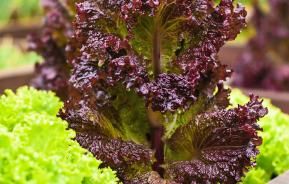Ever wondered how tea is produced? Let us take you on the process and hopefully inspire you to grow your own tea.
Processing the harvested tea leaves you’ve grown will determine how strongly flavoured your tea will be, whether it is a softly spoken green tea or a full-on builders brew. Producing Green Tea involves the simplest process, here’s how…
Green tea production process
Step 1: harvest
First, you need to select the leaves for harvest. In the spring and summer, you should notice a fresh 'flush' (a harvest in terms of tea is a flush) of young leaves and these are the perfect ones for tea making and the most prized by tea growers. Pick the two youngest leaves and the bud of each branch to give yourself a small pile of fresh soft leaves to work with.
Step 2: steaming
The next step is to heat the leaves by steaming them. A steamer works best or you can use a colander over a pan of boiling water, steam for 1-2 minutes. You want the leaves to start to wilt and turn an olive green colour. Be careful when steaming that you don't cook the leaves and to do this watch their colour but also ‘scrunch’ them in their cloth. You should never have the bundles temperature so high that you can't carefully handle them and by feeling for them to go limp you'll know they are ready for the next step.
Step 3: shaping
So now you’re looking at a limp olive green ball of leaves, which is warm to touch but cool enough to knead, much the same as bread. If you're not keen in kneading the leaf, then using a sushi mat works well for this to get them nice and even, but you can also roll them in the palms of your hands - working them into narrow tubular shapes and as you do so, this breaks down the chemistry inside the leaf that will give your tea it’s flavour.
Note: The enzymes you are causing to react will, in turn, combine with the waxy outer surface to produce caffeine. If you want to make caffeine-free tea then remove the wax from the leaf before you start steaming.
Step 4: oxidation
Oxidation is the chemical process that is easiest to observe by looking at a dried tealeaf’s colour. The greener the leaf, the less oxidised it is. Like a cut banana turning brown, the tea leaf turns brown as it oxidizes.
White and Green teas are the least oxidised (as apparent in the light and green colour of the leaf and infusion). Black teas are the most oxidised (as you can see in the dark colour of the leaf and deep crimson-brown of the infusion).
Step 5: drying
This part of the tea production process can be done in two different ways, Pan Frying or Oven Baking.
Drying by pan frying: Dry the leaves in a pan by tossing them continuously and checking they don't burn with your hands. However, a warm oven would probably suit anyone not practised at such 'hands-on' cooking.
Drying by oven baking: If using an oven, place the rolled leaves on a baking tray in a preheated oven at 100C for 10-12 minutes and turn them halfway through. Once again be careful not to burn them, then allow to cool down and dry out a bit further.
Step 6: enjoy your cup of home grown tea
That’s it! The tea production process is complete. You’ve made Green Tea! Put the kettle on and look forward to your first homegrown/homemade cup of tea. Green tea doesn’t need to be hot however, so allow the water to cool for 3-4 minutes before brewing up.
Step 7: storing leftover tea leaves
The leaf you have leftover can be stored for the future and will mature in flavour over the coming week or two. Place your finished tea in an airing cupboard for another day or two until everything feels crisp, then store in an airtight container and store somewhere that doesn't let the light in.
How to make oolong tea
To make Oolong Tea simply place the freshly harvested leaves and buds on a tray in the sun for 24 hours, allowing them to wilt, or 'wither', before following the instructions for Green Tea Production.
How to make black tea
For black tea, roll the leaves as soon as they have been plucked and then leave to dry in the sun for up to 3 days. Then follow the same instructions for Green Tea Production. The oxidation that occurs when the leaves are lying out, will create a stronger flavour and darker colour to the final brew.








